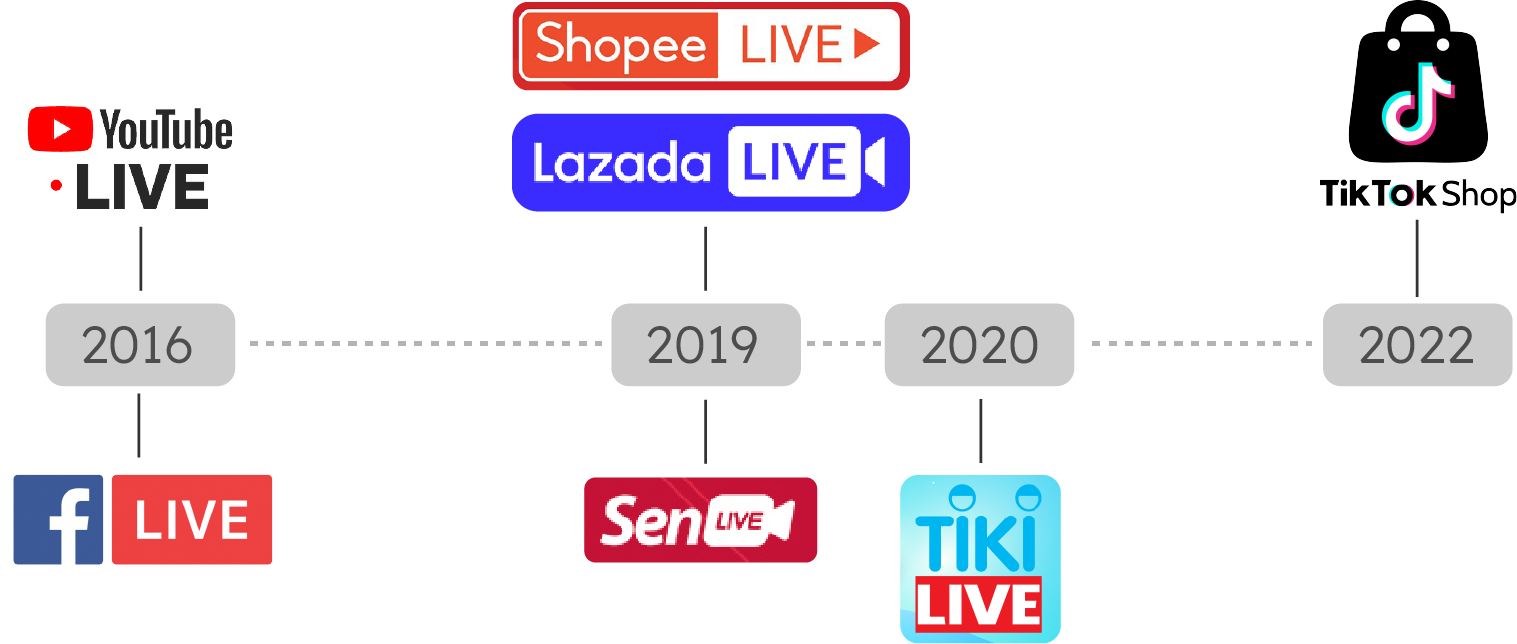"I just decided to go live and chat casually with my customer," he says.
"I was probably the first Vietnamese man to livestream selling women’s clothes."
At the time GUMAC, the fashion company Van founded, was a small startup in HCMC, but seeing the potential of the new sales method, the then-CEO began to livestream eight to 10 hours each day.
With hundreds of thousands of viewers watching some sessions, his brand grew quickly and allowed him to open 30 new stores within a year.
Van never dreamed that, eight years later, livestreaming on social media would become one of the most successful marketing tools in Vietnam.

Shops started to first come across livestreaming when it became a Chinese trend in 2016 after e-commerce giant Alibaba launched Taobao Live, a streaming platform that worked like TV shopping but allowed two-way real-time interaction between sellers and buyers.
Taobao proved a success with nearly US$14 million in sales through livestreams and videos in 2018, and 34% of viewers making purchases.
"Vietnamese picked up the trend quickly," Chu Xuan Duc, chairman of digital media company DC Media Global, says.
Vendors turned Facebook Live into a distribution channel, taking advantage of the large number of social media users.
In a typical livestream one or two sellers would introduce a large number of products along with discounts and say the name of the customers who have made a successful order.
"I was addicted to livestreaming," Van, who livestreamed three sessions a day for three years, says.
At one point he coughed blood due to overwork.
Three years after Facebook Live was launched, e-commerce platforms began to see the potential of livestreaming and created their own versions of it, with Lazada making the first move, followed by Shopee and Sendo.
But though these platforms made shopping through livestreaming easier, they were unable to take advantage of the large number of users on Facebook.
Reaching millions
TikTok saw the opportunity and launched its shoppertainment feature TikTok Shop in 2022 allowing sellers to reach millions of users via livestreaming.
Nguyen Lam Thanh, policy director of TikTok Vietnam, says his platform provides a continuous experience for users who do not need to leave the app to shop.
Owners of businesses also found it much easier to sell via TikTok compared to traditional marketing platforms.
Nguyen Phuong, founder of fashion brand GUNO, says: "Thanks to TikTok’s livestreaming feature, I was able to make my brand so popular that there were times when I could not fulfill all the orders."
After a year of livestreaming on TikTok, GUNO’s monthly revenues surged 20-fold.
Within a few months GUNO became one of the 10 best-selling vendors on TikTok Shop.
In its most successful session, which had over 3,000 viewers, the company sold VND2 billion worth of goods.
TikTok Shop has now surpassed Lazada in the number of vendors and is the second biggest e-commerce platform in Vietnam in terms of revenues behind Shopee.
Duc says TikTok is able to retain users because it does not allow rewatching of livestreams, which means users lose the opportunity to get discounts if they do not turn on the app.
The influence of reviewers and opinion leaders also plays a big role in making livestreaming popular.
Around 53% of Vietnamese consumers are influenced by online communities when making shopping decisions, and 86% want to discover products and buy them on the same platform.
A trend for all brands
As livestreaming expanded, big brands in Vietnam felt compelled to join the trend and began to sell expensive smartphones and TVs through this channel.
Between just December 2023 and March 2024, over 13,000 stores opened on TikTok Shop, including FPT Shop, one of the biggest electronics retailers in Vietnam.
FPT’s director of commerce, Nguyen The Kha, said the rise of shoppertainment and changes in young people’s shopping habits are among the reasons why FPT Shop sells on social media.
Young people enjoy interacting directly with sellers on livestreams because it saves them time from going to a store, he says.
"Livestreaming is turning things upside down in the e-commerce market," Pham Thao Linh, head of e-commerce at the consumer product division of L’Oreal Vietnam, the biggest cosmetics company in the country, says.
Some unknown brands have attained popularity in no time while established brands struggle to catch up with changes, she says.
Big brands often have many protocols on how to advertise their products and they are inflexible in following social media trends, she adds.
Traditional companies that want to dive into livestreaming often partner with opinion leaders and social media influencers, she says.
One such company sold 1,000 products in two minutes during a livestream session, which was unprecedented for it, she says.

New workforce
The rise of livestreaming and social media shopping has created new jobs in Vietnam.
Duc says there are over 400,000 content creators on TikTok and many "streamers," people who broadcast livestreams.
Pham Ngoc Duy Liem, cofounder of streaming service provider GoStream, says top streamers make VND200-300 million for a session plus commissions.
While there are many streamers who work for legitimate companies, some admittedly take advantage of livestreams to sell fake goods.
Nguyen Hong Son, a lecturer at Hanoi Law University, says streaming should be recognized as a job with work permits, enabling its regulation.
Story by Viet Duc, May Trinh